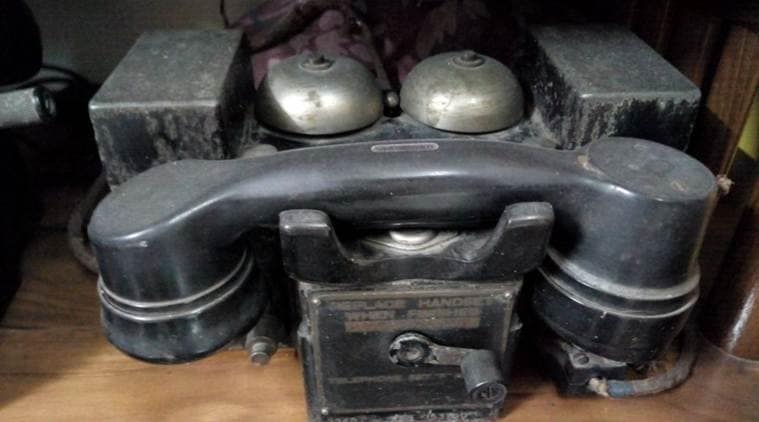 In the developed world, the middle class has widened to include almost all of society. But the desire to memorialise it is paradoxically new. (Source: Pratik Kanjilal)
In the developed world, the middle class has widened to include almost all of society. But the desire to memorialise it is paradoxically new. (Source: Pratik Kanjilal)
In a very middle class neighbourhood of south Kolkata — so very middle class that the narrow streets wind freely — ignoring the anxieties of town planners is a rare institution. It is a museum of the middle class, spread across two tiny apartments. One is the home of the curator, Apurba Kumar Panda, overrun by bric-a-brac. Panda has bought the other flat to have more display space, a reckless act for a family man of modest means. But then, the very act of curating the middle class is reckless, for it consists of memorialising ordinariness.
“Average people have average things, and they’re generally thrown away by successive generations,” says Panda. “The products of elite culture and folk traditions are preserved in museums, but the material culture of the layer in between, the middle class, is forgotten.” The process of forgetting is happening fast in Kolkata, Rajiv Gandhi’s “dying city” which is now eager to leave its decadence behind. Heritage buildings are being razed to make room for high-rises, and each of the homes brought down yields windfalls for a handful of collectors in the city. Kolkata has the remains of a thriving culture of auction houses, but serious collectors like Panda stay clear of them. He relies on a network of about 50 peddlers and kabadiwallahs, who let him know when something interesting falls into their hands. He also combs a “bhanga bazaar” (literally, a market for busted things) near the town of Joynagar.
And so, apart from usual suspects like brassware from the puja rooms and kitchens of the last century, he has extraordinary artefacts — extraordinary because you may have seen them before, perhaps in your own home, but never expected to encounter them again. The most ordinary is a collection of tiny soft-drink bottles — real Campa Cola and Thums Up in tiny plastic replica bottles — which were used to publicise homegrown colas when George Fernandes threw out the American brands. They jostle for space with metal canteens and schoolchildren’s water bottles from the pre-Bisleri era.
Drawing-room decorations are everywhere — posters, prints, calendar art and kitsch porcelain pantheons. The gods and goddesses, which once graced display cabinets, were imported from Germany and Japan between the 1890s and the 1930s, before Calcutta Potteries and Hindustan Potteries entered the market. The Shivas and Durgas (and a German Gandhi), which share space with mythological prints (the most interesting is a DP Banerjee print of Abhimanyu bidding farewell to Uttara, printed in Australia) show how Raja Ravi Varma’s influence spread across the commercial arts, including porcelain.
Then there is the intriguing, and the wholly obscure. A keg of rum, alongside a pottery bottle of King of Kings whiskey. Little tablets which turn into ink if you add water; a travelling inkwell which won’t spill even if it is upside down. The most unexpected exhibit is a huge sample case of fish-hooks from O Mustad & Son, Oslo, noted suppliers of tackle since 1877. The foxiest is the jamai thakano gelash — literally, “glass for befooling the son-in-law”. If the son-in-law only drinks from it, he’s a fool, because there’s a hidden compartment in the base which holds a sweetmeat. And if he thinks that’s all, he’s a bloody fool, because there’s betel secreted away in another compartment.
From the bizarrely homely to the arcane: A Gandhi-era charkha, perhaps used by some forgotten freedom fighter, leans against a wartime field telephone — you cranked a handle to power your transmission. A very officious seven-cell torch (in wartime, you needed a security permit over five cells) and an answer to why Bengalis call kerosene lamps “Hajacks”. They were imported from the German company HASAG, which gained infamy during the War for using slave labour from Auschwitz, Buchenwald, Schönefeld and Polish ghettos.
The middle class loved tobacco and paan paraphernalia. There’s a wooden replica Philips radio which is really a cigarette dispenser. And there’s a brass touring car which is really a betel and smoking case, with the makings under the hood, in the cabin and the trunk, and an ashtray and matchbox on the running boards. I was delighted to find the twin of a model racing car that I had inherited from my father. He regarded it as something special, because it was made of lightweight aluminium. Which gives away its age — the metal, now commonplace, became popular in the ’40s, when duralumin was used to build warplanes.
In the developed world, the middle class has widened to include almost all of society. But the desire to memorialise it is paradoxically new. The US National Museum of the Middle Class opened in 2004 in the Chicago suburb of Schaumburg. Since the ’90s, the Geffrye in London’s Shoreditch has recreated period rooms of middle class England. But the world has few museums focused on the middle class, and therefore the efforts of middle class private collectors like Panda are especially important. Someday, your child or grandchild may want to know what sort of toys you played with when you were their age. Only a visit to a middle class museum would answer that question.
Pratik Kanjilal lectures a surprisingly tolerant public on far too many issues.